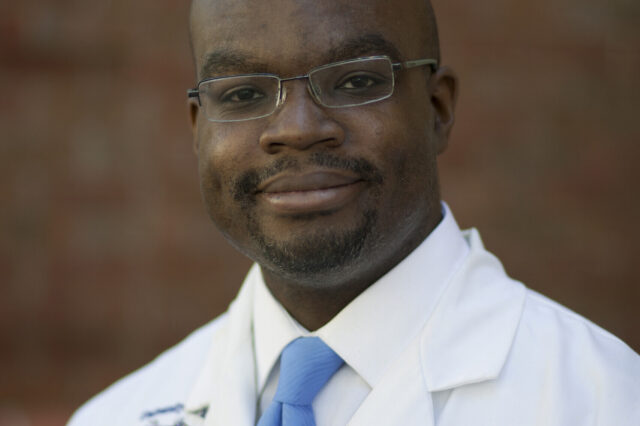Florida’s prescription drug database is underused, UF Health researchers find

Nearly seven years after a statewide database was created to encourage safer prescribing and to reduce opiate abuse and diversion, the number of emergency medicine providers who use the system remains low, University of Florida Health researchers have found.
In Florida, the stakes are enormous: State officials reported 2,530 prescription drug overdose deaths in 2015. On May 3, Florida Gov. Rick Scott declared the opioid epidemic a public health emergency, allowing the state to tap more than $27 million of federal grant money for treatment, prevention and recovery services.
The Prescription Drug Monitoring Program was created by the state Legislature to prevent patients from obtaining multiple or overlapping prescriptions for painkillers or tranquilizers from different physicians, a practice known as “doctor shopping.” Yet the database isn’t being used consistently in emergency rooms, where opioids are commonly prescribed: Fifty-one percent of health providers surveyed said they only use the database when they suspect a patient may misuse the medication. About one in five (21 percent) said they rarely use the database and 9 percent reported never using it when prescribing opioids. Just 3 percent of providers reported using the database every time they prescribed opioid pain relievers.
The results were gathered from 88 respondents throughout Florida who answered a 25-question survey distributed within the Florida College of Emergency Physicians’ newsletter for five weeks in late 2015 and early 2016. The findings were published April 18 in the International Journal of Emergency Medicine.
“The biggest surprise was that more than half of the providers who responded only used the database when they suspected someone was going to be misusing medication,” said Henry Young II, M.D., the study’s lead researcher, an assistant professor in the UF College of Medicine’s department of emergency medicine and a National Institute on Drug Abuse research fellow.
While underutilization is an issue, Young said it was more important to understand why the database isn’t accessed more often and what can be done to change that. Among the respondents who were medical residents, half of them said they rarely use the database. Young attributed that to residents being very busy while also trying to absorb the learning curve that comes with being an emergency room physician.
“We found that there are quite a few barriers to access that slow the use of the database. For a younger physician, those impediments get amplified more than for a provider who has been doing this for years and has the workflow ironed out,” Young said.
More broadly, the research pointed out why more providers — physicians, residents, physician assistants and advanced registered nurse practitioners — do not use the database. For users, the most common complaints about the database were that it “timed out” too often and required frequent password changes, the researchers found. Among all other users, more than half said the system is too difficult to access and 45 percent said getting information takes too long.
Young said making better use of the database will allow providers to make better-informed prescribing decisions. Some states require providers to check a patient’s record in the database before issuing a prescription, though Florida isn’t among them.
Young and his colleagues have several recommendations to promote better use of the prescription database. They include decreasing the frequency of mandatory password changes, reducing system timeouts and integrating the prescription database into electronic health record systems. After patients’ prescription drug information was merged into medical records in Indiana, a 2013 study found that it was used much more frequently. That integration is something Young said he strongly supports, and he said he will work with the database developers to suggest revisions.
He also notes that the database has made valuable contributions to a decrease in oxycodone-related deaths. Florida’s 23 percent decline in drug poisoning deaths between 2010 and 2013 was the largest of any state, according to the Centers for Disease Control and Prevention.
“The motive isn’t to just catch people who are abusing the system. It’s also a way to inform everyone who is involved in a patient’s treatment and to promote conversations. You may well find someone who needs help with an addiction,” Young said.
A grant from the National Institute on Drug Abuse supported the research.
About the author
